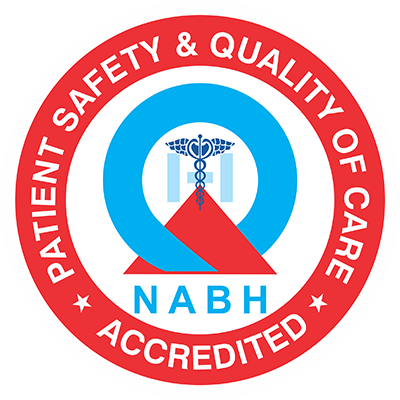
Pregnancy is a life-transformative journey. But for some women, it can come with added risks. High-risk pregnancies require more monitoring and specialised care to ensure the safety of both mother and baby.
Let’s look at seven of the most common complications in high-risk pregnancies, and how they can be managed with the right medical guidance.
1.Preeclampsia
Preeclampsia is a pregnancy-specific condition marked by high blood pressure and signs of damage to organs such as the liver or kidneys. It typically occurs after 20 weeks of pregnancy.
Prevention & Management:
- Regular prenatal checkups
- Monitoring blood pressure and protein levels in urine
- Medication to control blood pressure
- Early delivery in severe cases
At 31 weeks of pregnancy, Nitya, a first-time mother, noticed sudden swelling in her hands and face. She brushed it off as part of the bodily changes occurring during pregnancy. But a routine prenatal visit revealed that her BP had spiked dangerously high. She was diagnosed with preeclampsia, and the next few weeks became a delicate balancing act between prolonging the pregnancy and keeping both Nitya and her baby safe. With round-the-clock monitoring,BP medication, and steroid shots to help fetal lung development, she delivered a healthy baby boy at 35 weeks. Early detection had made all the difference.
2. Gestational Diabetes
This type of diabetes develops during pregnancy and affects the manner in which the body processes sugar.
Prevention & Management:
- Routine glucose screening
- Controlled diet and regular exercise
- Blood sugar monitoring
- Insulin therapy if needed
Nazreen, 34, had a smooth first pregnancy five years ago. But during her second, she failed her routine glucose tolerance test. “I wasn’t overweight, I was active…how could I have Diabetes?” was her question. But gestational diabetes can surprise even the healthiest of women. With the help of a nutritionist, a tailored diet plan, and frequent blood sugar checks, she managed to keep her glucose levels within range. Her biggest learning? “I didn’t have to starve; I just had to get smart about what I ate.” She gave birth to a full-term baby girl with no complications.
3.Placenta Previa
This condition occurs when the placenta covers the cervix, which can cause bleeding and interfere with normal delivery.
Prevention & Management:
- Pelvic rest (avoiding intercourse and internal exams)
- Bed rest or hospitalization in severe cases
- Scheduled C-section delivery
4.Preterm Labour
Labour that starts before 37 weeks can pose risks to the baby’s development, especially that of the lungs and brain.
Prevention & Management:
- Identifying risk factors early (e.g. previous preterm birth)
- Progesterone supplements
- Corticosteroid injections to accelerate fetal lung development
- Hospital-based monitoring and tocolytic medications to delay labour
5.Intrauterine Growth Restriction (IUGR)
IUGR is a condition where the baby doesn’t grow at the expected rate inside the womb.
Prevention & Management:
- Ultrasounds to track fetal growth
- Adequate nutrition and rest
- Treatment of underlying causes like high blood pressure
- Early delivery, if growth stalls
6.Multiple Pregnancies (Twins or More)
Carrying more than one baby increases the risk of preterm birth, anemia, and preeclampsia.
Prevention & Management:
- Frequent monitoring
- Higher nutritional requirements
- Planning for early or C-section delivery
- Neonatal care readiness
7.Cervical Insufficiency
When the cervix begins to open too early during pregnancy, it can lead to miscarriage or preterm delivery.
Prevention & Management:
- Transvaginal ultrasounds to assess cervical length
- Cervical cerclage (a surgical stitch to close the cervix)
- Bed rest and progesterone therapy
Managing a high-risk pregnancy is as much about timely diagnosis and expert care as it is about emotional reassurance and trust. Each complication brings its own set of uncertainties, but with the right team, these challenges can be met with calm and confidence.
At BBR Hospitals in Hyderabad, comprehensive maternal care marked by an integrated approach is both a practice and promise. With timely diagnosis, multi-disciplinary care, and an informed mother at the centre of every decision, even the most complex pregnancies have resulted in healthy outcomes. A highly-skilled team of obstetricians, foetal medicine experts, diabetologists, and neonatologists working in sync, and advanced diagnostics, round-the-clock neonatal support including Level 3 NICU and foetal monitoring systems, 24×7 ICU , personalised birthing plans enable BBR to ensure that expectant mothers facing complications receive not just treatment, but reassurance, clarity, and continuity of care in every step of their journey.


